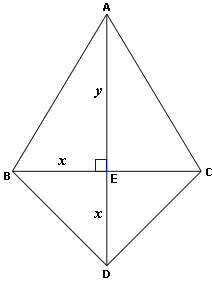
Get out those rulers, protractors and compasses because we've got some great worksheets for geometry The quadrilaterals are meant to be cut out, measured, folded, compared, and even. Regular polygon area formula: P = n × a P = n \times a P = n × a. This page includes Geometry Worksheets on angles, coordinate geometry, triangles, quadrilaterals, transformations and three-dimensional geometry worksheets. Kite perimeter formula: P = 2 ( a + b ) P = 2(a + b) P = 2 ( a + b ).Īnnulus perimeter formula: P = 2 π ( R + r ) P = 2\pi(R + r) P = 2 π ( R + r ).

P = a + b + a 2 + b 2 − 2 a b × cos ( γ ) ) P = a + b + \sqrt P = 2 e 2 + f 2 .It tracks your skill level as you tackle progressively more difficult questions. P = a + b + c P = a + b + c P = a + b + c or Arithmetic Mean Geometric Mean Quadratic Mean Median Mode Order Minimum Maximum Probability Mid-Range Range Standard Deviation Variance Lower Quartile Upper Quartile Interquartile Range Midhinge Standard Normal Distribution. IXLs SmartScore is a dynamic measure of progress towards mastery, rather than a percentage grade.The diagonals of a kite are perpendicular. The shorter diagonal divides the kite into two isosceles triangles. Rectangle perimeter formula: P = 2 ( a + b ) P = 2(a + b) P = 2 ( a + b ). A kite is symmetrical about its main diagonal. Square perimeter formula: P = 4 a P = 4a P = 4 a. Here are the perimeter formulas for the twelve geometric shapes in this calculator: The word quadrilateral is derived from two Latin. We also have tools dedicated to each shape – just type the name of the shape in the search bar at the top of this webpage. In Euclidean geometry, a quadrilateral is a four-sided 2D figure whose sum of internal angles is 360. Rhombuses and kites with right triangles Trigonometry and area.
#Image of a kite geometry free#
Scroll down to the next sections if you're curious about a specific shape, and wish to see an explanation, derivation, and image for each of the twelve shapes present in this calculator. Free Printable Math Worksheets for Geometry. One diagonal (segment KM, the main diagonal) is the perpendicular bisector of the other diagonal (segment JL, the cross diagonal ). Note: Disjoint means that the two pairs are totally separate.

In this paragraph, we'll list all of the equations used in this perimeter calculator. The properties of the kite are as follows: Two disjoint pairs of consecutive sides are congruent by definition. However, there are cases where there are no sides (such as an ellipse, circle, etc.), or one or more sides are unknown. Usually, the most simple and straightforward approach is to find the sum of all of the sides of a shape.


 0 kommentar(er)
0 kommentar(er)
